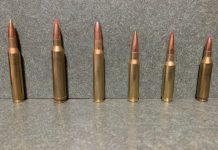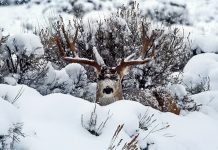A dead bear caused quite the uproar in a Colorado neighborhood last week. Residents were angered to find that a sow had been killed leaving her three cubs behind. One person in the neighborhood even offered a generous reward for tips leading to the person who killed the bear. That homeowner has finally come forward and the case is closed. Two of the three bear cubs have also been recovered and sent to live at a wildlife rehabilitation center.
Colorado Parks and Wildlife released the following:
On the evening of June 28, a Castle Pines resident admitted to Colorado Parks and Wildlife officers about killing a sow bear due to concerns that it was attempting to enter into their home at approximately 1 a.m. on Thursday, June 27.
The sow was accompanied by three cubs.
Under state statute, it is lawful for a person to use lethal force to protect their personal safety when they feel threatened by a bear. Any such killing of a bear that falls under that statute must be reported within five days, which lawfully occurred in this case.
Colorado Parks and Wildlife officers are still looking into the situation to make sure it has all the facts surrounding this case.
“This is an unfortunate occurrence, and you never want to hear of a sow getting killed and cubs being orphaned,” said CPW Northeast Region Manager Mark Leslie. “Review of the events, in this case, did not reveal any statutory violation with regards to the killing of the sow.”
The case highlights the challenges of managing wildlife along the Front Range.
“Black bears are an important native species in Colorado, and they are thriving,” Leslie said. “We have a lot of people living in good bear habitat now, and Castle Pines is one of many examples of that. Anywhere along the Front Range provides good bear habitat because they have everything they need to survive – food, shelter and water. The food sources available to them are part of their natural diets, but they also are frequently lured into our neighborhoods by attractants that accompany humans like trash, bird feeders, pet food and the smells left from barbeque grills.”
“If you are putting your trash out the night before collection, or if you have a bird feeder out this time of year, you are harming the well-being of our bears,” Leslie added. “That leads to human-bear conflicts that can escalate into dangerous and sad situations like we are seeing here in Castle Pines.”
The body of the sow was located on Friday morning and a necropsy was performed by wildlife officers later that afternoon.
On Friday morning, wildlife officers were able to capture two cubs. The cubs were taken to Frisco Creek, a wildlife rehabilitation facility operated by Colorado Parks and Wildlife near Del Norte. The reported third cub was never recovered.
The primary purpose of wildlife rehabilitation is to mimic, as much as possible, the conditions an animal will face in the wild to prepare it for a successful release. So, for bears at Frisco Creek that means that contact with humans is minimized. Bears live in a secure enclosure with other bears which helps them to develop physically and socially. Large tree branches, stumps, boulders, platforms and metal shelters allow the bears to develop the skills they need to survive in the wild.
The bears are also fed in a way that imitates life in the woods. During summer and fall in the wild, food is abundant and bears eat almost constantly in order to put on the fat they need to get them through the winter. At Frisco Creek they get fed generously and the goal is to get the cubs’ fat stores up so they can survive their first winter hibernation.
As the weather cools in the fall, the amount of food available to bears in the wild declines ‒ that also provides a signal that the hibernation season is near. So at Frisco Creek the quantity of food the cubs will be given is cut back and eventually cut off.
In early January, the cubs settle into hibernation in the metal containers their enclosures have for shelter. It is where the cubs sleep and hide during the summer months. The containers – about 4-feet square – became their dens for hibernation, which eventually they will be released in those back into the wild.
The original release can be read here.














